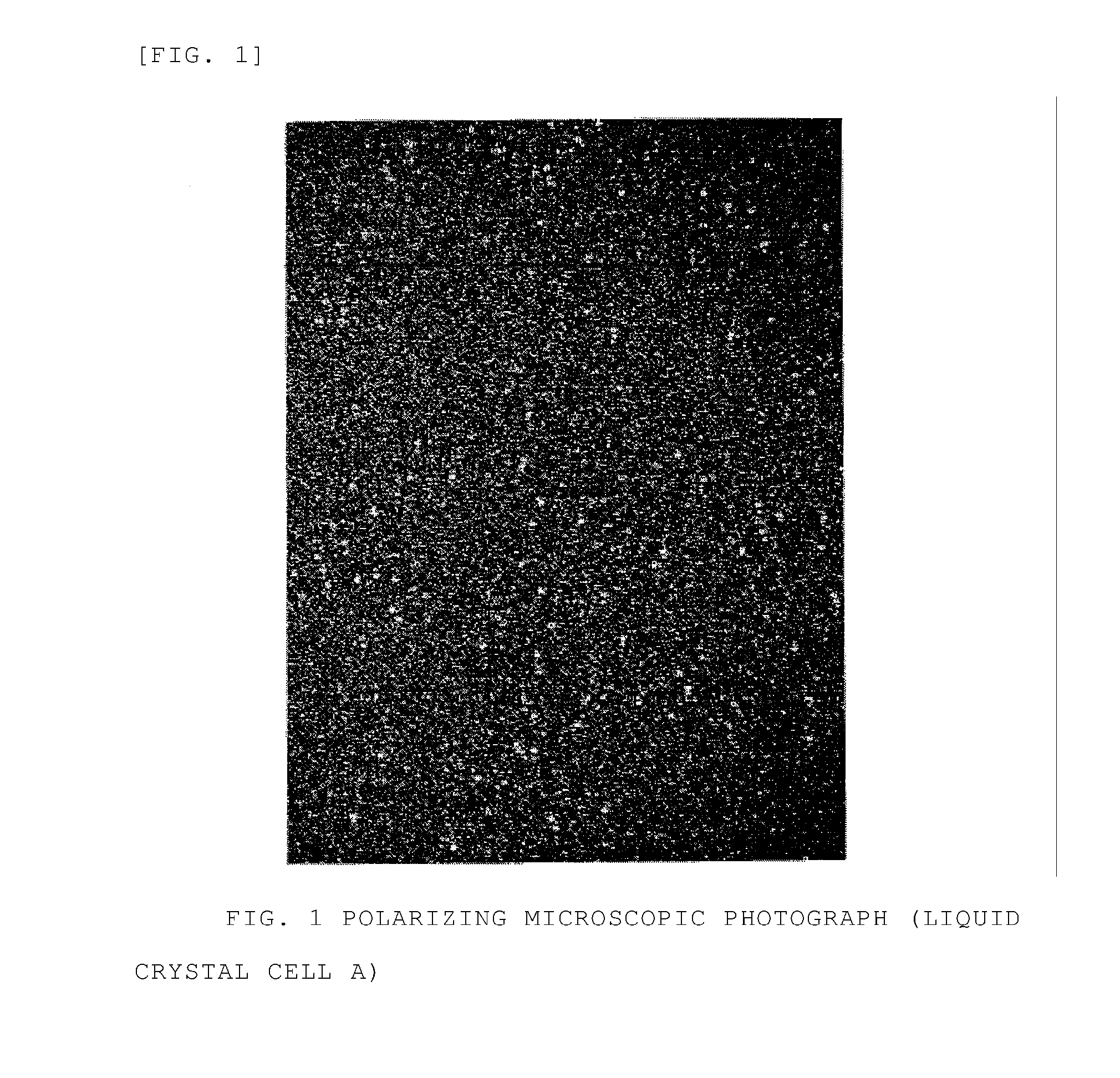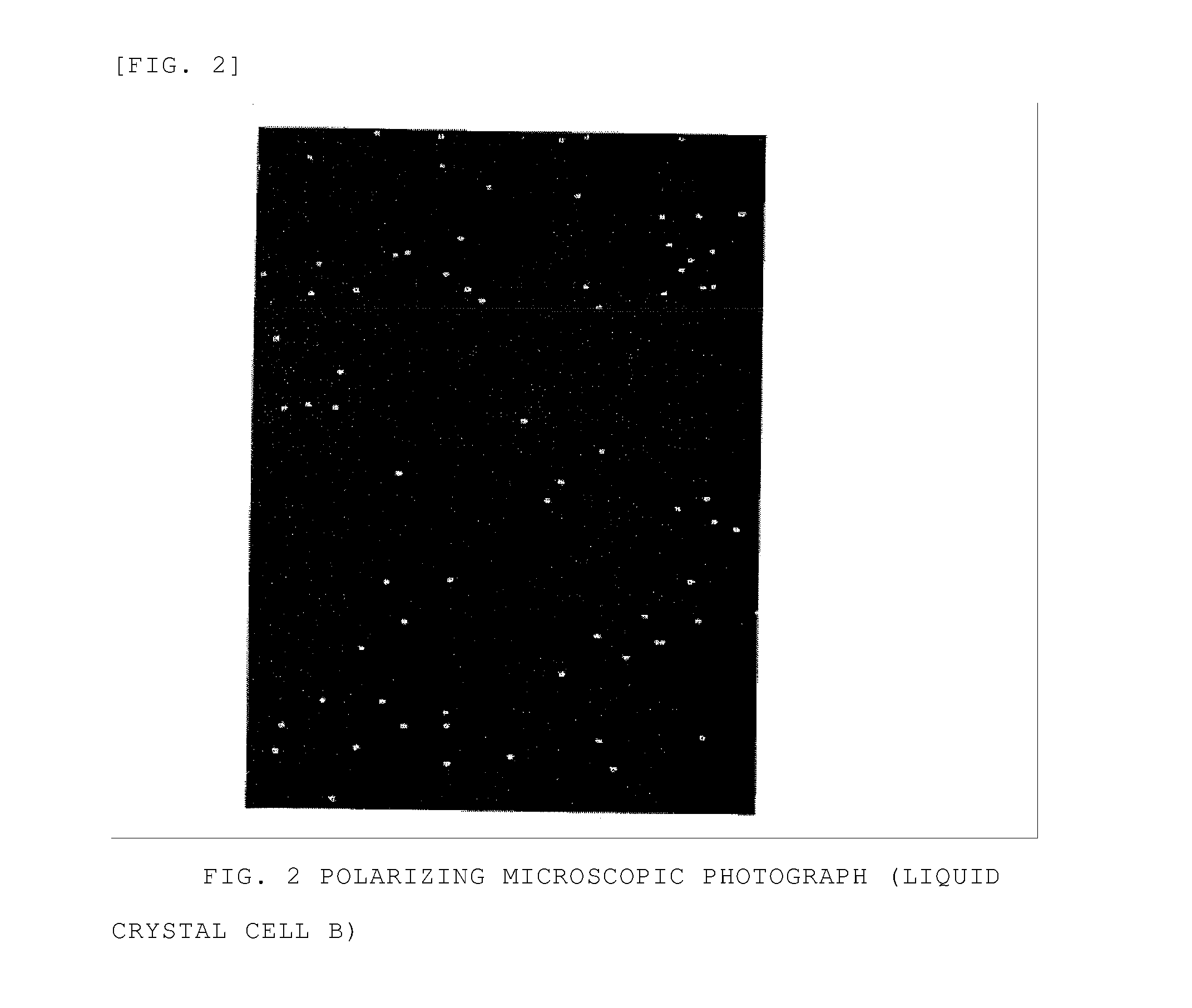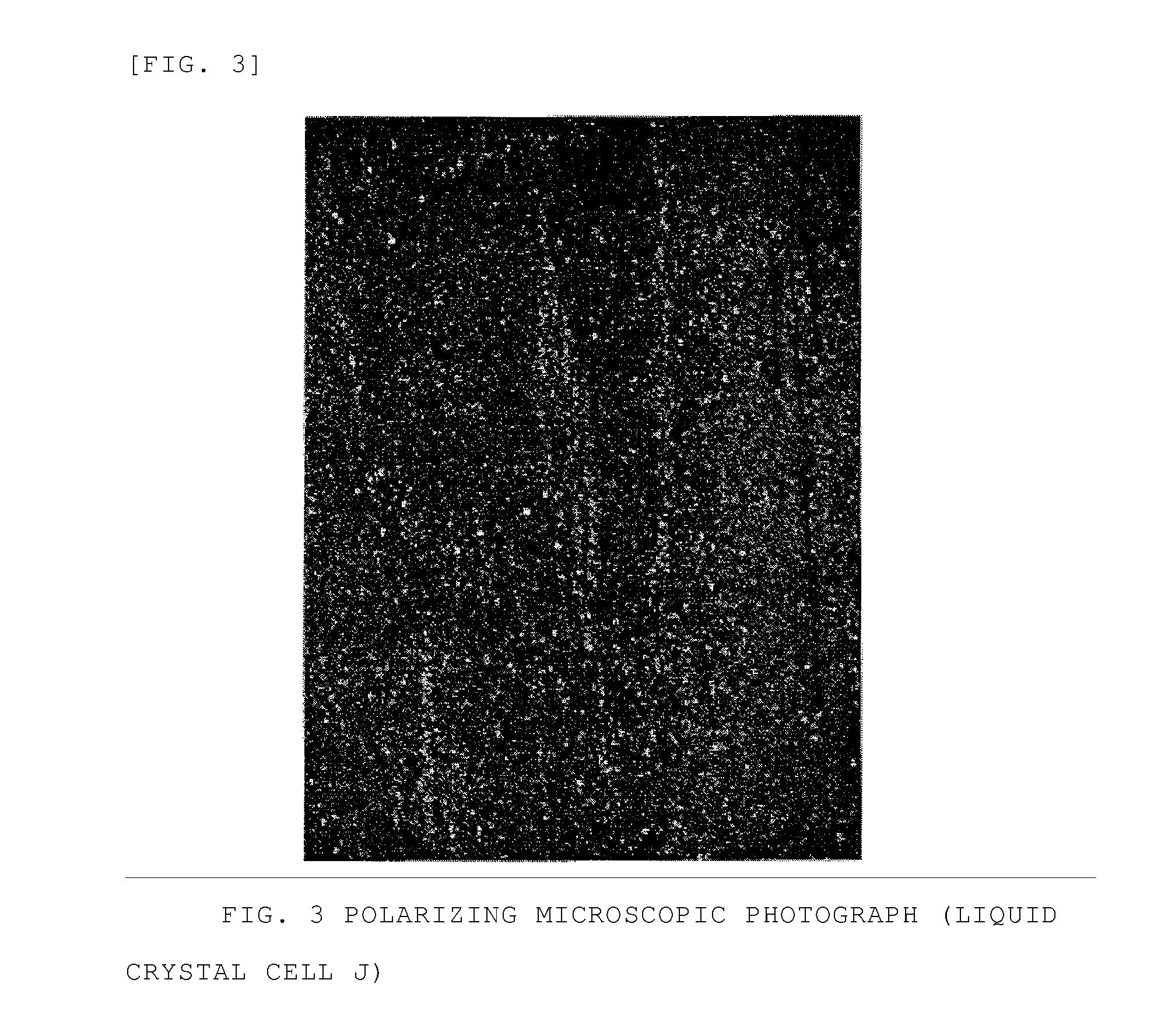Photo-alignment film and liquid crystal display element
a technology of liquid crystal display element and alignment film, which is applied in the field of photoalignment film, can solve the problems of display irregularity, difficulty in keeping constant image quality, and difference in elevation, and achieve the effects of low ion density, excellent alignment stability of liquid crystal composition thereof, and high voltage holding ratio
- Summary
- Abstract
- Description
- Claims
- Application Information
AI Technical Summary
Benefits of technology
Problems solved by technology
Method used
Image
Examples
example 1
[0215]Preparation of Varnish A having the Following Composition:
[0216]
mol %4,4′-Diaminotolane50PMDA25CBTA25
[0217]4,4′-diaminotolan (1.2534 g, 6.018 mmol) was dissolved in NMP (N-methyl-2-pyrrolidone, 22.5 g) and then added with PMDA (0.5901 g, 3.009 mmol) and CBTA (0.6564 g, 3.009 mmol) while the temperature of the mixture was kept at room temperature or lower. After stirring for 2 hours, BC (ethylene glycol monobutyl ether, 22.5 g) was added to the mixture. The viscosity of the resulting solution was 350 mPa·s. The solution was stirred at 60° C. for about 4 hours, thereby yielding varnish having a viscosity of 33 mPa·s (weight average molecular weight; 45,000).
example 2
[0218]Preparation of Varnish B having the Following Composition:
[0219]
mol %4,4′-Diaminodiphenyl-1,4-butadiyne50PMDA25CBTA25
[0220]4,4′-diaminodiphenyl-1,4-butadiyne (1.3216 g, 5.690 mmol) was dissolved in NMP (22.5 g) and then added with PMDA (0.6205 g, 2.845 mmol) and CBTA (0.5579 g, 2.845 mmol) while the temperature of the mixture was kept at room temperature or lower. After stirring for 2 hours, BC (22.5 g) was added to the mixture. The viscosity of the resulting solution was 170 mPa·s. The solution was stirred at 60° C. for about 2 hours, thereby yielding varnish having a viscosity of 28 mPa·s (weight average molecular weight; 37,000).
example 3
[0221]Preparation of Varnish C having the Following Composition:
[0222]
mol %504,4′-Diaminostilbene25PMDA25CBTA
[0223]4,4′-diaminostilbene (1.2590 g, 5.592 mmol) was dissolved in NMP (22.5 g) and then added with PMDA (0.6535 g, 2.996 mmol) and CBTA (0.5875 g, 2.996 mmol) while the temperature of the mixture was kept at room temperature or lower. After stirring for 2 hours, BC (22.5 g) was added to the mixture. The viscosity of the resulting solution was 140 mPa·s. The solution was stirred at 60° C. for about 2 hours, thereby yielding varnish having a viscosity of 32 mPa·s (weight average molecular weight; 46,000).
PUM
| Property | Measurement | Unit |
|---|---|---|
| boiling points | aaaaa | aaaaa |
| temperature | aaaaa | aaaaa |
| wavelength | aaaaa | aaaaa |
Abstract
Description
Claims
Application Information
 Login to View More
Login to View More - R&D
- Intellectual Property
- Life Sciences
- Materials
- Tech Scout
- Unparalleled Data Quality
- Higher Quality Content
- 60% Fewer Hallucinations
Browse by: Latest US Patents, China's latest patents, Technical Efficacy Thesaurus, Application Domain, Technology Topic, Popular Technical Reports.
© 2025 PatSnap. All rights reserved.Legal|Privacy policy|Modern Slavery Act Transparency Statement|Sitemap|About US| Contact US: help@patsnap.com



